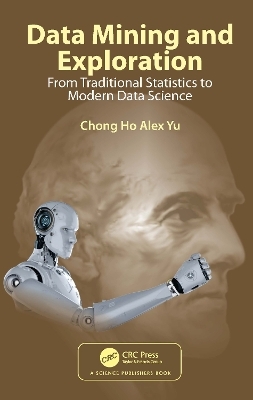
Data Mining and Exploration
CRC Press (Verlag)
978-0-367-72146-6 (ISBN)
This book introduces both conceptual and procedural aspects of cutting-edge data science methods, such as dynamic data visualization, artificial neural networks, ensemble methods, and text mining. There are at least two unique elements that can set the book apart from its rivals.
First, most students in social sciences, engineering, and business took at least one class in introductory statistics before learning data science. However, usually these courses do not discuss the similarities and differences between traditional statistics and modern data science; as a result learners are disoriented by this seemingly drastic paradigm shift. In reaction, some traditionalists reject data science altogether while some beginning data analysts employ data mining tools as a “black box”, without a comprehensive view of the foundational differences between traditional and modern methods (e.g., dichotomous thinking vs. pattern recognition, confirmation vs. exploration, single method vs. triangulation, single sample vs. cross-validation etc.). This book delineates the transition between classical methods and data science (e.g. from p value to Log Worth, from resampling to ensemble methods, from content analysis to text mining etc.). Second, this book aims to widen the learner's horizon by covering a plethora of software tools. When a technician has a hammer, every problem seems to be a nail. By the same token, many textbooks focus on a single software package only, and consequently the learner tends to fit the problem with the tool, but not the other way around. To rectify the situation, a competent analyst should be equipped with a tool set, rather than a single tool. For example, when the analyst works with crucial data in a highly regulated industry, such as pharmaceutical and banking, commercial software modules (e.g., SAS) are indispensable. For a mid-size and small company, open-source packages such as Python would come in handy. If the research goal is to create an executive summary quickly, the logical choice is rapid model comparison. If the analyst would like to explore the data by asking what-if questions, then dynamic graphing in JMP Pro is a better option. This book uses concrete examples to explain the pros and cons of various software applications.
Chong Ho Alex Yu has a Ph.D. in Educational Psychology with a focus on Measurement, Statistics, and Methodological Studies, and a Ph.D. in Philosophy with specialization in History and Philosophy of Science (Arizona State University). He joined Azusa Pacific University in 2012 and has served in various positions, including Director of Data Analytics, Professor of Behavioural and Applied Science, Adjunct Faculty of Mathematics, Quantitative Research Consultant, and Committee chair of the Big Data Discovery Summit.
1. Re-examination of Traditional Statistics 2. Why Data Science? 3. Cutting Edge Data Analytical Tools 4. Exploratory Data Analysis and Data Visualization: Pattern Seeking 5. Generalized Regression: Penalty against Complexity 6. Classification and Model Screening 7. Ensemble Methods: The Wisdom of the Crowd 8. Dimension Reduction: Breaking the Curse of Dimensionality 9. Clustering: Divide and Conquer 10. Neural Networks: Machines Mimic Human Intelligence 11. Text Mining: Structure the Unstructured
| Erscheinungsdatum | 10.10.2022 |
|---|---|
| Zusatzinfo | 45 Tables, black and white; 16 Line drawings, color; 88 Line drawings, black and white; 2 Halftones, black and white; 16 Illustrations, color; 90 Illustrations, black and white |
| Verlagsort | London |
| Sprache | englisch |
| Maße | 156 x 234 mm |
| Gewicht | 671 g |
| Themenwelt | Mathematik / Informatik ► Informatik ► Datenbanken |
| Informatik ► Theorie / Studium ► Künstliche Intelligenz / Robotik | |
| Mathematik / Informatik ► Mathematik | |
| Technik ► Elektrotechnik / Energietechnik | |
| Technik ► Umwelttechnik / Biotechnologie | |
| ISBN-10 | 0-367-72146-5 / 0367721465 |
| ISBN-13 | 978-0-367-72146-6 / 9780367721466 |
| Zustand | Neuware |
| Informationen gemäß Produktsicherheitsverordnung (GPSR) | |
| Haben Sie eine Frage zum Produkt? |
aus dem Bereich


